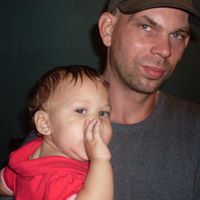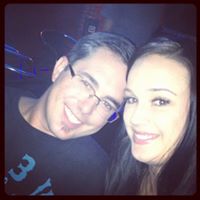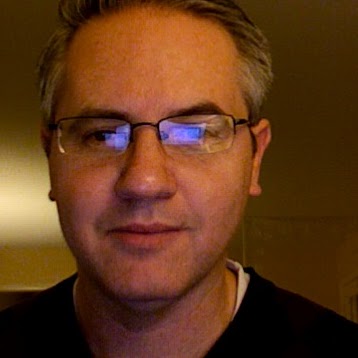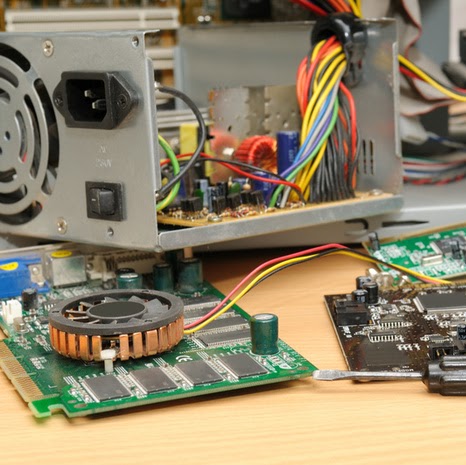Kenneth P Brewer
age ~60
from Reno, NV
- Also known as:
-
- Kenneth Peter Brewer
- Ken P Brewer
- Phone and address:
- 7476 Sandstone Dr, Reno, NV 89511
Kenneth Brewer Phones & Addresses
- 7476 Sandstone Dr, Reno, NV 89511
- San Ramon, CA
- Redding, CA
- 565 Kiva Ave, Mesa, AZ 85210 • 4802848759
- 3645 Constitution Ct, Gilbert, AZ 85296 • 4802848759
- San Diego, CA
- Mountain View, CA
- Concord, CA
Work
-
Company:120 H St.
-
Address:Bakersfield
-
Phones:6613274854
Education
-
School / High School:galenapark- galenapark1987
Specialities
Buyer's Agent • Listing Agent
Real Estate Brokers

Kenneth Brewer, Bakersfield, CA Broker
view sourceSpecialties:
Buyer's Agent
Listing Agent
Listing Agent
Work:
120 H St.
Bakersfield
6613274854 (Office)
Bakersfield
6613274854 (Office)
Isbn (Books And Publications)


Name / Title
Company / Classification
Phones & Addresses
President
United Homeworkers Association
Work-At-Home Cos.
Work-At-Home Cos.
422 Chestnut St., Dept. GOV5, Manchester, NH 03101
THE TOPAZ GROUP, INC
MAPLE PARK BODY & FRAME, INC
S-K MOTOR SPORTS, LC
President/ceo
K.K.H. TRUCKING INCORPORATED
Local Trucking Operator
Local Trucking Operator
1212 S Mcclintock Dr, Tempe, AZ 85281
PO Box 888, Coolidge, AZ 85128
PO Box 888, Coolidge, AZ 85128
Us Patents
-
Voltage Limiting Protection For High Frequency Power Device
view source -
US Patent:6548869, Apr 15, 2003
-
Filed:Jul 13, 2001
-
Appl. No.:09/905294
-
Inventors:Kenneth P. Brewer - Mountain View CA
Howard D. Bartlow - Nampa ID
Johan A. Darmawan - Santa Clara CA -
Assignee:Cree Microwave, Inc. - Sunnyvale CA
-
International Classification:H02H 900
-
US Classification:257355, 257356, 257296
-
Abstract:An RF power device comprising a power transistor fabricated in a first semiconductor chip and a MOSCAP type structure fabricated in a second semiconductor chip. A voltage limiting device is provided for protecting the power transistor from input voltage spikes and is preferably fabricated in the semiconductor chip along with the MOSCAP. Alternatively, the voltage limiting device can be a discrete element fabricated on or adjacent to the capacitor semiconductor chip. By removing the voltage limiting device from the power transistor chip, fabrication and testing of the voltage limiting device is enhanced, and semiconductor area for the power device is increased and aids in flexibility of device fabrication.
-
Multiple Aperture Ultrasound Array Alignment Fixture
view source -
US Patent:8473239, Jun 25, 2013
-
Filed:Apr 14, 2010
-
Appl. No.:12/760327
-
Inventors:Donald F. Specht - Los Altos CA, US
Kenneth D. Brewer - Santa Clara CA, US
David M. Smith - Lodi CA, US
Sharon L. Adam - San Jose CA, US
John P. Lunsford - Los Altos Hills CA, US -
Assignee:Maui Imaging, Inc. - Sunnyvale CA
-
International Classification:G01N 29/00
-
US Classification:702100
-
Abstract:Increasing the effective aperture of an ultrasound imaging probe by including more than one probe head and using the elements of all of the probes to render an image can greatly improve the lateral resolution of the generated image. In order to render an image, the relative positions of all of the elements must be known precisely. A calibration fixture is described in which the probe assembly to be calibrated is placed above a test block and transmits ultrasonic pulses through the test block to an ultrasonic sensor. As the ultrasonic pulses are transmitted though some or all of the elements in the probe to be tested, the differential transit times of arrival of the waveform are measured precisely. From these measurements the relative positions of the probe elements can be computed and the probe can be aligned.
-
Imaging With Multiple Aperture Medical Ultrasound And Synchronization Of Add-On Systems
view source -
US Patent:8602993, Dec 10, 2013
-
Filed:Aug 7, 2009
-
Appl. No.:13/002778
-
Inventors:Donald F. Specht - Los Altos CA, US
Kenneth D. Brewer - Santa Clara CA, US -
Assignee:Maui Imaging, Inc. - Sunnyvale CA
-
International Classification:A61B 8/00
-
US Classification:600437, 600443
-
Abstract:The benefits of a multi-aperture ultrasound probe can be achieved with add-on devices. Synchronization and correlation of echoes from multiple transducer elements located in different arrays is essential to the successful processing of multiple aperture imaging. The algorithms disclosed here teach methods to successfully process these signals when the transmission source is coming from another ultrasound system and synchronize the add-on system to the other ultrasound system. Two-dimensional images with different noise components can be constructed from the echoes received by individual transducer elements. The disclosed techniques have broad application in medical imaging and are ideally suited to multi-aperture cardiac imaging using two or more intercostal spaces.
-
Point Source Transmission And Speed-Of-Sound Correction Using Multi-Aperture Ultrasound Imaging
view source -
US Patent:20110201933, Aug 18, 2011
-
Filed:Feb 17, 2011
-
Appl. No.:13/029907
-
Inventors:Donald F. Specht - Los Altos CA, US
Kenneth D. Brewer - Santa Clara CA, US -
International Classification:A61B 8/14
-
US Classification:600443
-
Abstract:A Multiple Aperture Ultrasound Imaging system and methods of use are provided with any number of features. In some embodiments, a multi-aperture ultrasound imaging system is configured to transmit and receive ultrasound energy to and from separate physical ultrasound apertures. In some embodiments, a transmit aperture of a multi-aperture ultrasound imaging system is configured to transmit an omni-directional unfocused ultrasound waveform approximating a first point source through a target region. In some embodiments, the ultrasound energy is received with a single receiving aperture. In other embodiments, the ultrasound energy is received with multiple receiving apertures. Algorithms are described that can combine echoes received by one or more receiving apertures to form high resolution ultrasound images. Additional algorithms can solve for variations in tissue speed of sound, thus allowing the ultrasound system to be used virtually anywhere in or on the body.
-
Calibration Of Ultrasound Probes
view source -
US Patent:20120057428, Mar 8, 2012
-
Filed:Oct 21, 2011
-
Appl. No.:13/279110
-
Inventors:Donald F. Specht - Los Altos CA, US
Kenneth D. Brewer - Santa Clara CA, US
David M. Smith - Lodi CA, US
Sharon L. Adam - San Jose CA, US
John P. Lunsford - San Carlos CA, US
David J. Specht - San Jose CA, US -
International Classification:G01N 29/30
-
US Classification:367 13
-
Abstract:A method of calibrating an ultrasound probe includes mounting an ultrasound probe onto a calibration system, transmitting an ultrasound test signal from an element of the probe through a test medium of the calibration system, and receiving the test signal on a matrix of hydrophones such that an element's position relative to other elements and other arrays within the same probe can be computed. Further, the system described herein is configured to detect the acoustic performance of elements of a probe and report the results to an end user or service provider.
-
Motion Detection Using Ping-Based And Multiple Aperture Doppler Ultrasound
view source -
US Patent:20130144166, Jun 6, 2013
-
Filed:Nov 30, 2012
-
Appl. No.:13/690989
-
Inventors:Donald F. SPECHT - Los Altos CA, US
Kenneth D. BREWER - Santa Clara CA, US
David M. SMITH - Lodi CA, US
Josef R. CALL - Campbell CA, US
Tony LE - San Jose CA, US
Bruce R. RITZI - Sunnyvale CA, US -
International Classification:A61B 8/08
A61B 8/14
A61B 8/00 -
US Classification:600441, 600453
-
Abstract:A method of full-field or “ping-based” Doppler ultrasound imaging allows for detection of Doppler signals indicating moving reflectors at any point in an imaging field without the need to pre-define range gates. In various embodiments, such whole-field Doppler imaging methods may include transmitting a Doppler ping from a transmit aperture, receiving echoes of the Doppler ping with one or more separate receive apertures, detecting Doppler signals and determining the speed of moving reflectors. In some embodiments, the system also provides the ability to determine the direction of motion by solving a set of simultaneous equations based on echo data received by multiple receive apertures.
-
M-Mode Ultrasound Imaging Of Arbitrary Paths
view source -
US Patent:20130172743, Jul 4, 2013
-
Filed:Dec 28, 2012
-
Appl. No.:13/730346
-
Inventors:Kenneth D. BREWER - Santa Clara CA, US
David M. SMITH - Lodi CA, US
Rozalin M. LORENZATO - Palo Alto CA, US
Bruce R. RITZI - Sunnyvale CA, US -
International Classification:A61B 8/08
A61B 8/14
A61B 8/00 -
US Classification:600440
-
Abstract:Systems and methods of M-mode ultrasound imaging allows for M-mode imaging along user-defined paths. In various embodiments, the user-defined path can be a non-linear path or a curved path. In some embodiments, a system for M-mode ultrasound imaging can comprise a multi-aperture probe with at least a first transmitting aperture and a second receiving aperture. The receiving aperture can be separate from the transmitting aperture. In some embodiments, the transmitting aperture can be configured to transmit an unfocused, spherical, ultrasound ping signal into a region of interest. The user-defined path can define a structure of interest within the region of interest.
-
Determining Material Stiffness Using Multiple Aperture Ultrasound
view source -
US Patent:20130218012, Aug 22, 2013
-
Filed:Feb 21, 2013
-
Appl. No.:13/773340
-
Inventors:Donald F. Specht - Los Altos CA, US
Kenneth D. Brewer - Santa Clara CA, US -
International Classification:A61B 8/08
A61B 8/00
G03B 42/06
A61B 8/14 -
US Classification:600438, 367 7
-
Abstract:Changes in tissue stiffness have long been associated with disease. Systems and methods for determining the stiffness of tissues using ultrasonography may include a device for inducing a propagating shear wave in tissue and tracking the speed of propagation, which is directly related to tissue stiffness and density. The speed of a propagating shear wave may be detected by imaging a tissue at a high frame rate and detecting the propagating wave as a perturbance in successive image frames relative to a baseline image of the tissue in an undisturbed state. In some embodiments, sufficiently high frame rates may be achieved by using a ping-based ultrasound imaging technique in which unfocused omni-directional pings are transmitted (in an imaging plane or in a hemisphere) into a region of interest. Receiving echoes of the omnidirectional pings with multiple receive apertures allows for substantially improved lateral resolution.
License Records
Kenneth K Brewer
License #:
7094 - Expired
Category:
Water Operator
Issued Date:
Nov 10, 1995
Effective Date:
Jul 26, 2004
Expiration Date:
Dec 31, 1998
Type:
Grade VI Water Operator
Resumes

Technology Teacher At Bangor Area School District
view sourceLocation:
United States
Industry:
Education Management

Kenneth Brewer
view sourceLocation:
United States

Kenneth Brewer
view sourcePosition:
Owner at Brewer Design Labs, LLC, Vice President, Engineering at Maui Imaging, Inc.
Location:
San Francisco Bay Area
Industry:
Design
Work:
Brewer Design Labs, LLC since 2005
Owner
Maui Imaging, Inc. since 2008
Vice President, Engineering
Owner
Maui Imaging, Inc. since 2008
Vice President, Engineering
Skills:
FPGA
System Design
Hardware Architecture
Digital Signal Processors
Firmware
VHDL
Embedded Software
Verilog
PCB design
Systems Engineering
Signal Processing
Debugging
System Design
Hardware Architecture
Digital Signal Processors
Firmware
VHDL
Embedded Software
Verilog
PCB design
Systems Engineering
Signal Processing
Debugging

Kenneth Brewer baycity
view sourceWork:
rigg ett
super vax operator
super vax operator
Medicine Doctors

Kenneth R. Brewer
view sourceSpecialties:
Podiatric Medicine, Orthopaedic Surgery
Work:
Franciscan Medical GroupFranciscan Foot & Ankle Associates
4700 Pt Fosdick Dr NW STE 205, Gig Harbor, WA 98335
2538589192 (phone), 2538571431 (fax)
4700 Pt Fosdick Dr NW STE 205, Gig Harbor, WA 98335
2538589192 (phone), 2538571431 (fax)
Procedures:
Arthrocentesis
Hallux Valgus Repair
Hallux Valgus Repair
Conditions:
Plantar Fascitis
Hallux Valgus
Tinea Pedis
Hallux Valgus
Tinea Pedis
Languages:
English
Description:
Dr. Brewer works in Gig Harbor, WA and specializes in Podiatric Medicine and Orthopaedic Surgery.
Plaxo

Kenneth J. Brewer Sr
view source
Kenneth Brewer
view sourceWashington Financier Mgmt LLC
Classmates

Kenneth Brewer
view sourceSchools:
Heritage Christian School Middletown OH 1980-1984
Community:
Herb Davis, Jeannie Minor, Tonya Cassidy, Kim Browning, Lisa Overmeyer, Alan Cox

Kenneth Brewer
view sourceSchools:
Vocational Skills Center Spokane School Spokane WA 1987-1989
Community:
Nancy Christenson, Renae Trautmann

Kenneth Brewer
view sourceSchools:
Hatfield High School Hatfield AR 1976-1980
Community:
Diana Caskey, Daron Sadler, Veronica Moody, Dwayne Miller

Kenneth Brewer
view sourceSchools:
De Sales High School Columbus OH 1976-1980
Community:
Terry Henkel, Doug Curran

Kenneth Brewer
view sourceSchools:
Spencer Memorial Baptist School Tampa FL 1973-1980, Buchanan Junior High School Tampa FL 1980-1982
Community:
Kimberly Martinez

Kenneth Brewer
view sourceSchools:
Bradley Central High School Cleveland TN 1966-1970
Community:
Pam Scoggins, Vicki Stiles

Kenneth Brewer
view sourceSchools:
Ferriday High School Ferriday LA 1967-1971
Community:
Fred Waltman, Elaine Croft

Kenneth Brewer
view sourceSchools:
Mt. Sterling Christian School Mt. Sterling KY 2003-2007
Community:
Danielle Updike, Dustin Hinds, Jessie Patrick, Isabel Smith, Jennifer Whitton

Kenneth Brewer
view source
Kenneth Brewer
view source
Kenneth Randy Brewer
view source
Kenneth MaxaMillionare Br...
view source
Kenneth Ray Brewer
view source
Kenneth Earl Brewer
view source
Kenneth Brewer
view source
Kenneth James Brewer
view sourceGoogleplus

Kenneth Brewer
Education:
Westerville North High School, Ohio State University - Computer Software Engineer

Kenneth Brewer

Kenneth Brewer

Kenneth Brewer

Kenneth Brewer

Kenneth Brewer

Kenneth Brewer

Kenneth Brewer
Youtube
Myspace
Flickr
Get Report for Kenneth P Brewer from Reno, NV, age ~60
















